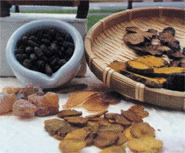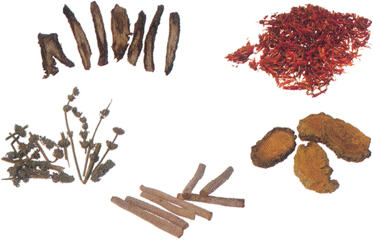Blood stasis is the root cause of many bodily ailments. What brings about blood stasis?

The Concept of Blood Stasis
Blood stasis occurs when blood that is flowing in the human body actually slows down or is blocked. This is a pathological syndrome and is often the basic cause of many illnesses. What will happen if one suffers from blood stasis or irregular blood flow?
Manifestations of Blood Stasis
Chinese physicians believe that if there is no blockage in blood flow, one will not suffer from pain; conversely, the bodily part that suffers from blockage in blood flow is likely to experience pain. In the case of blood stasis, pain is felt at specific bodily parts and this is often prolonged.
If blood stasis occurs in the heart, resulting in blockage in the blood vessels, these symptoms may be experienced: heart palpitations, tightness and pain in the chest, and lips and nails that are purplish in tone, and emotional disturbances.
If blood stasis occurs in the lungs, the patient may suffer chest pain and coughing with blood. If blood stasis occurs in the digestive system, these may be experienced: vomiting of blood, or dark-coloured stools.
Women suffering blood stasis in the uterus may experience abdominal pain, irregular or painful menstruation, dark blood clots in the menstrual blood or heavy menstrual flow. Hence, blood stasis can happen anywhere in the body, and it is often characterised by aches and pains.
These are the manifestations of blood stasis:
- Bodily aches e.g. headache, chest pain, pain in the rib cage, stomachache, abdominal pain etc. Mass or lumps, both external and internal. External lumps often show up as swelling with greenish-purple tone.
- Hemorrhage, e.g. coughing of blood, vomiting of blood, hematochezia, hematuria and epistaxis. Blood flows through the blood channels but when there is deficiency of qi and blood circulation is blocked, the irregular flow of blood may result in hemorrhage-related illnesses.
- Upon diagnosis through observation, the patient may be seen to have dark-coloured or purplish nails, lips, and tongue with spots.
- Upon diagnosis through pulse-taking, the pulse may be one of these:
a.Deep pulse: Felt only by applying pressure. Indicative of disease that has attacked the internal organs.
b.Fine pulse: Thin and thready, faint yet perceptible. Indicates deficiency of yin and blood.
c.Knotted pulse: Pulse pausing at irregular intervals. Usually seen in cases of stagnation of qi or blood, and phlegm due to cold.
d.Hesitant pulse: Uneven pulse. Usually caused by loss or stagnation of qi and blood.


Promoting Blood Flow and Removing Blood Stasis
- Chinese medicinal herbs for the dual-purpose of promoting blood flow and removing blood stasis are called blood-activating herbs or herbs for removing blood stasis. These herbs are able to help clear the blockages present in the blood channels, thus relieving rheumatism and swelling, as well as alleviate pain and allow wounds to heal. They also have the ability to relieve numbness, ‘interior’ and ‘exterior’ blood clots, treat bleeding with dark-coloured blood and masses, and clear spots on the tongue caused by blood stasis.
- In treating blood stasis, it is crucial to first determine the cause(s) of blood stasis before prescribing a combination of herbs to achieve one or more of these desired outcomes: promote blood flow, invigorate qi and promote yang, treat blood deficiency, warm the interior and dissipate cold, remove phlegm, nourish yin, remove internal heat and remove pathogenic wind, etc.
For instance, in treating the syndrome of yin-deficiency, these herbs may be prescribed to nourish yin: Rehmannia Root, Dwarf Lilyturf Tuber, Fragrant Solomonseal Rhizome, etc.


